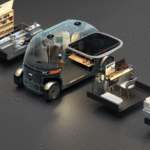Researchers at Singapore University of Technology and Design (SUTD) and Nanyang Technological University (NTU Singapore) have been investigating methods to print microfiltration membranes and spacers using a variety of AM and hybrid 3D printing processes.
The membranes and membrane spacers are used extensively in water treatment processes such as microfiltration / nanofiltration, reverse osmosis and membrane distillation.
Membrane spacers are traditionally made by extrusion and welding of low-density polypropylene filaments into a mesh. This separates the membranes, which themselves are normally manufactured from porous ceramics, or polymers.
Ceramic membranes have a high cost due to the high temperature requirements of the manufacturing process. Polymer membrane manufacture is so complex it requires accurate control and monitoring of process parameters that it similarly adds to the costs.
And so the research team has examined the current capabilities of AM when applied to these components, as well as observed the limitations. Many of these limitations can be overcome by use of hybrid AM.
3D Printing & Hybrid 3D Printing
Due to the small diameter required for the membrane pores (0.1–1.0 µm) it is difficult to manufacture the membranes with 3D printing alone, due to the limits in resolution of 3D printers. For this reason, various Hybrid 3D printing approaches were reviewed.
A Hybrid approach requires secondary processes to attain the pore diameters beyond what 3D printing can provide alone. For the Hybrid AM strategy, researchers examined dip-coating, thermal curing, thermal sintering and debinding in combination with various AM methods to make the prototypes.
The 3D printing methods included material extrusion, material jetting, powder bed fusion, vat photopolymerization and binder jetting.
The spacers were successfully manufactured with AM, and Hybrid AM was not needed at that point. Hybrid AM appears to offer more value in membrane production than spacer production, at least for the immediate future.
The paper concludes by identifying limitations in current AM technology regarding resolution, and suggests that Hybrid AM can serve a purpose for producing membranes. In terms of pure AM processes however, Two-Photon Polymerization (TPP) method seems to offer the highest resolution for such small pores.
“It will not be an easy challenge to overcome upscaling and material limitations, but consistent research efforts are already evident today,” said Professor Chua Chee Kai co-author and Head of Pillar for Engineering Product Development, SUTD.
“Potentially, 4D printing can even be a possibility in the future to fabricate smart spacers and membranes that adapt to its surrounding environment.”
You can read the full research paper over at this link.










